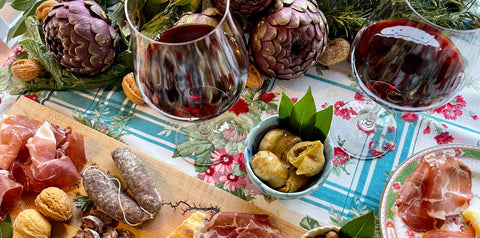For decades, Tuscany has been in our collective spotlight. We’ve marveled over the Sangiovese, the cobblestone streets of Florence, the magical hilltop towns, and the incredible artwork. And in the world’s enthusiasm for Tuscany, Umbria has often been overlooked. But things are changing.
With a new generation at the helm, the region is stepping into its own spotlight. People are starting to take note of the area’s incredible wines and traditional cheeses, and how completely it embodies the ideals of the Slow Food movement. Umbria is a place where you eat, and drink, what you grow. Where sharing a small table decked with honest food is more desirable than eating at any Michelin star restaurant. This makes Umbria an incredible destination.
“Umbria is just starting to wake up from its Sleeping Beauty-like slumber,” says Kaila Terraneo, who offers unique, experience-driven stays at Poggio Belvedere by Vero, the Umbrian estate she runs with her husband Ludovico. “There are movers and shakers all over these lands, and they are young and full of passion.”

“Umbria is often described as being ‘wilder’ than Tuscany,” Kaila continues, “and that really is the best way to describe it. The scenery is untouched, the views are uninterrupted, the people are a little more raw, the food is made for the people and their traditions, the wines are purely terroir-driven, and the agriculture is still very much to sustain those within the region.”
Wine is very much a part of that agricultural identity. Producers like Danilo Marcucci, Paolo Bea, and the Mattioli family focus on creating authentic, natural wines that embody their region’s farm-to-table mentality.
Danilo, who has studied with some of the greatest natural winemakers in recent Italian history, is responsible for the reinvigoration of the Conestabile della Stafa estate in between Lake Trasimeno and Perugia. For centuries, it was run by one of the noble families of Umbria, and at one point the village around the estate operated as a self-sufficient commune producing wine, olive oil, wool and silk, and more.

Danilo brought everything he knew to the estate when he married into the family. Now, it’s been reborn. Vines that had been left to fend for themselves have been revived, and Danilo is turning out authentic, rustic wines that we can’t get enough of (we recently featured two of them in our Dirt club.)
“The new generations are bringing Umbria to the next level,” Kaila says. “It’s our job to share these stories with people outside of Umbria, and that’s a big part of what we do at Vero.”
Other producers have been around a bit longer, and are just now seeing their campaign to bring Umbria into the spotlight bear fruit. Paolo Bea’s family has been in the Montefalco region since the 1500s. He’s the senior member of his family, and alongside his two sons, crafts intense, unique wines that are sought after throughout the wine-loving world.
In the southernmost part of Umbria, the Mattioli family tends to indigenous vines grown in the rugged hills. The father-daughter duo is reluctant to share their wines outside their community — they’re made in such small quantities, and are so unique. When they show up in the U.S., we get very excited.

Rebels in their own right — because pursuing natural winemaking in the age of big agriculture and bulk wines flooding supermarket shelves is rebellious — these producers are still what we could call "established."
Kaila and Ludovico say that there is a generation of new producers who are taking up their mantle. At Vero, they offer tours of some of these up-and-coming winemakers.
“We showcase wineries within our pocket of Umbria: those within the Colli Perugini DOC, Torgiano DOCG, and The Lake District of Colli Trasimeno DOC,” says Kaila. “We’re passionate about bringing life to the areas of Umbria that are little-known to tourists, and believe in telling the stories of those who are still unknown in the world of wine. We want to make room at the table for thoughtful producers, those who need us to translate their stories to curious consumers worldwide so we can really put Umbria on the wine map once and for all.”



